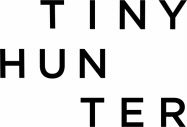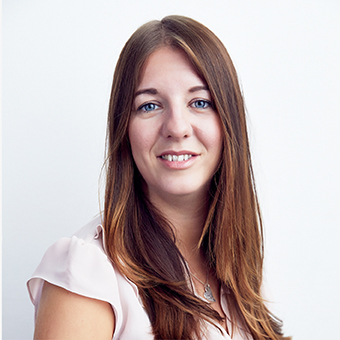A step by step guide to creating brand content that converts
Did you know that 70% of people would rather find out about a product through content than advertising? Not surprising really, but what is surprising is that 63% of businesses don’t have a documented content strategy. That’s a pretty scary gap when you think about it – especially when you consider how much time and effort your company probably puts into creating content every year.
That’s why we thought we’d share the process we use to create content for our clients here at Tiny Hunter, a process that has helped clients like Aura-Soma increase engagement by over 700%.
CREATE BUYER PERSONAS
Creating successful content is going to be pretty difficult if you don’t know who you’re talking to and what they want to know. Buyer personas help solve this. Ideally, you’ll be able to conduct customer interviews, but if not your sales team is your second port of call. Find out what your customers’ pain points are and what content will help them.
Use this information to write a few short profiles of the most common types of customers in your business. Make sure you give your personas names too. By humanising them you’ll have them in mind when it gets to putting pen to paper.
KEYWORD RESEARCH
Use keyword analysis tools like Google Keyword Tool and Keyword.io to find out exactly what people are searching for online. That way you can create content that answers their queries (and be found in searches). Other research techniques include historic data of how people have found your site, looking at what your competitors are ranking for, and writing down all of the FAQs you get from customers.
CONDUCT A CONTENT AUDIT
Take an honest and informed look at all of the content you’re producing already; blogs, website, EDMS, Twitter, Facebook, Instagram, LinkedIn, YouTube, newsletters, email signatures, landing pages, apps etc. What’s working? What isn’t? What’s worked in the past? What didn’t? What are your competitors doing? What’s working for them and what’s not? This information means you’ll be able to learn from past efforts and make informed decisions on what platforms to use and what information to share.
BUYER JOURNEY
Not all content does the same thing and each piece you create will have a different objective. Mapping out your buyer’s journey will help you get clarity on this;
- Awareness stage
- Consideration stage
- Decision stage
- Loyalty stage
There are different types of content that sit under each of these stages, and these will be different for every company. The awareness stage might include blog posts and social media, the consideration stage might include case studies or thought leadership to show your expertise, the decision stage often includes content such as testimonials and reviews, and loyalty could be monthly newsletters or special offers.
CONTENT STRATEGY
Think of all those times you’ve wondered ‘what should I write about today?’ or ‘Urgh, another Facebook post I need to write.’
A robust content strategy takes away that pressure and gives you a simple formula to work with, which tells you exactly what you should be writing about. It’s a document based on your research so far, and includes;
Content vision, audience, audience motivations, suggested channels, content themes and the percentage/weight each theme should be given.
So, what exactly is a content theme?
Let’s take L’Oréal as an example. Their themes might include:
- Our products (ingredients, new product launches etc)
- Makeup tutorials (inspiration on how to use the product)
- Behind-the-scenes (company and employee news)
- Fashion and health (showing how their brand fits into their target audience’s life)
And the weight of these might be 30%, 40%, 10% and 20% respectively.
How about a law firm?
- Company updates (promotions, accreditations, etc)
- Case studies (real-life stories of client success)
- Legal news (demonstrating knowledge)
- Culture and client news (the lighter side of the business)
And the weight of these might be 30%, 30%, 30% and 10% respectively.
Et voila. A simple ratio to show what you need to be creating, and how much of it you need.
VISUALS
We live in a visual world and making content look good is so important for success. Create a clear visual look and feel which ties in with your wider brand but works for social and digital. There are tools out there like Canva which lets you create templates and upload your brand palette in order to create consistency. Remember that images are vastly import (as is video) so you’ll need to allocate an imagery budget too.
PLANNING
Now you know what you want to say, where you’ll say it, and what it will look like visually, it’s time to get started on your planning. We like to plan 6-12 months ahead, ensuring everyone knows what content is coming up and when – meaning there is no last-minute rush. Obviously you should always be flexible and reactionary for time-critical content you want to share, but having a solid plan means more efficiency and also lets you see clearly any gaps you might have.
Essentially, the plan itself is a spreadsheet, but with a lot of thinking behind it. The first step is the fun part – ideas, ideas, ideas. Brainstorm blog topics, campaigns, EDMs, video ideas – any content you think you’ll need across the year. Make sure that, collectively, they answer all those key points in your strategy.
Plot these ideas out in your content plan (which includes dates) alongside the ‘business as usual’ content such as company anniversaries, financial results, days that you celebrate, events that you hold, new product launches etc. The ultimate aim is to create a resource which tells you at a glance the content you’ll be creating across the year and when.
BATCHING CONTENT
Rather than rushing to write content each day, or stressing about it on a weekly basis, batching is simply sitting down for a solid block and writing for a time period all at once. It might sound like more work but it actually gives far more efficiency and creativity. We like to create content in monthly batches, although you can do more than this if you like. For example, if you know that each month you’re writing a blog post focused on an aspect of your product, why not write them all at once?
Once your content is written and designed, Facebook has its own scheduling tool and there are plenty of third party tools which allow you to schedule to other platforms such as Twitter, Instagram, LinkedIn etc. Most content management systems let you schedule articles or blog post too.
SET AND FORGET…OR SHOULD YOU?
Following this process will make sure that your content is always meaningful and helpful to your customers. And, by planning, batching, and scheduling you can get super organised and ahead of the curve. But it’s important to always remember to re-assess, keep an ear to the ground about other topics you should be talking about, and always listen to your customers changing needs.
SOURCES
https://contentmarketinginstitute.com/wp-content/uploads/2016/01/NEOMG_Whitepaper_final_11-10-15_lk.pdf
https://www.slideshare.net/mprofs/b2b-content-marketing-2018-benchmarks-budgets-trends-north-america









